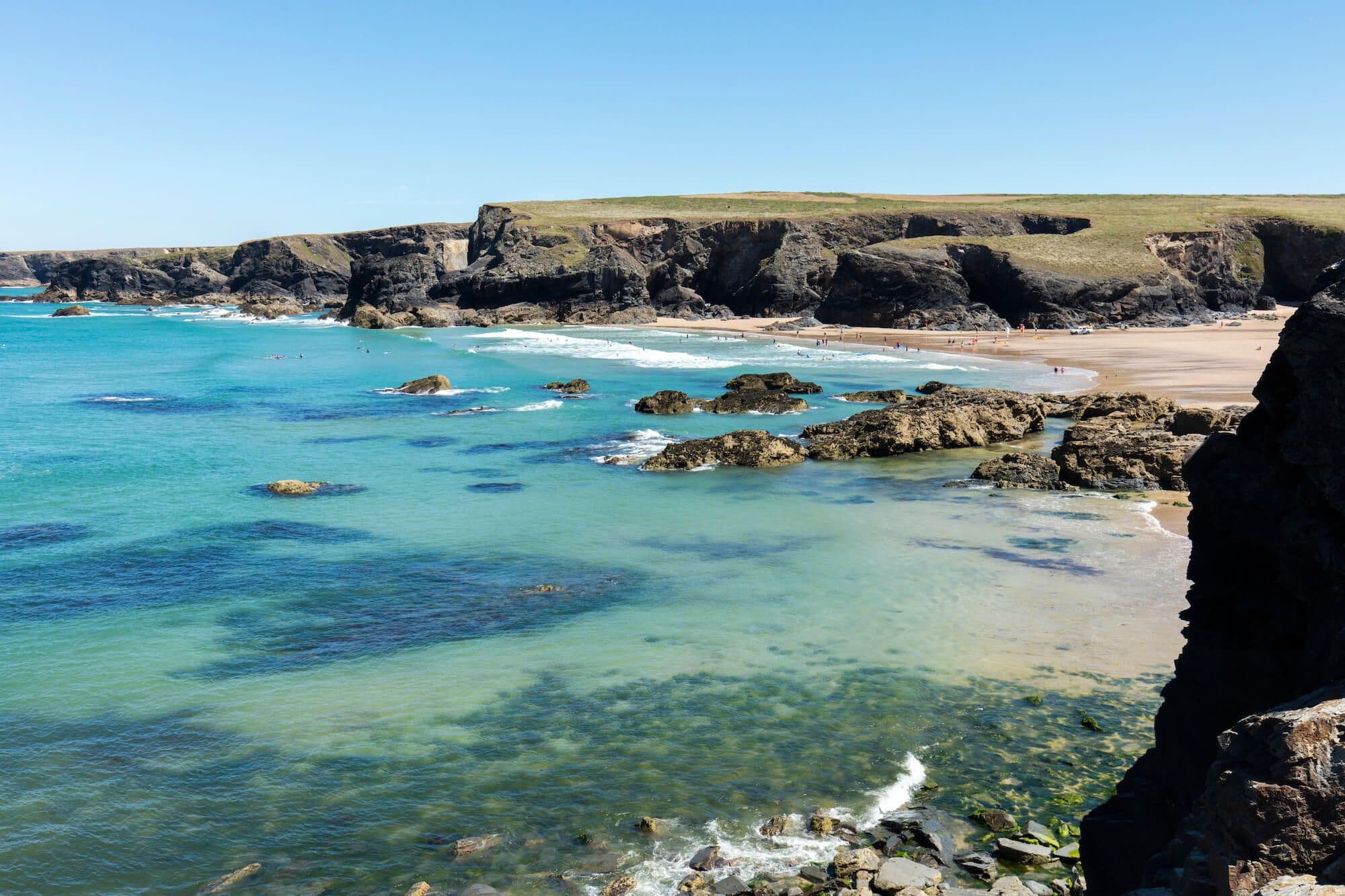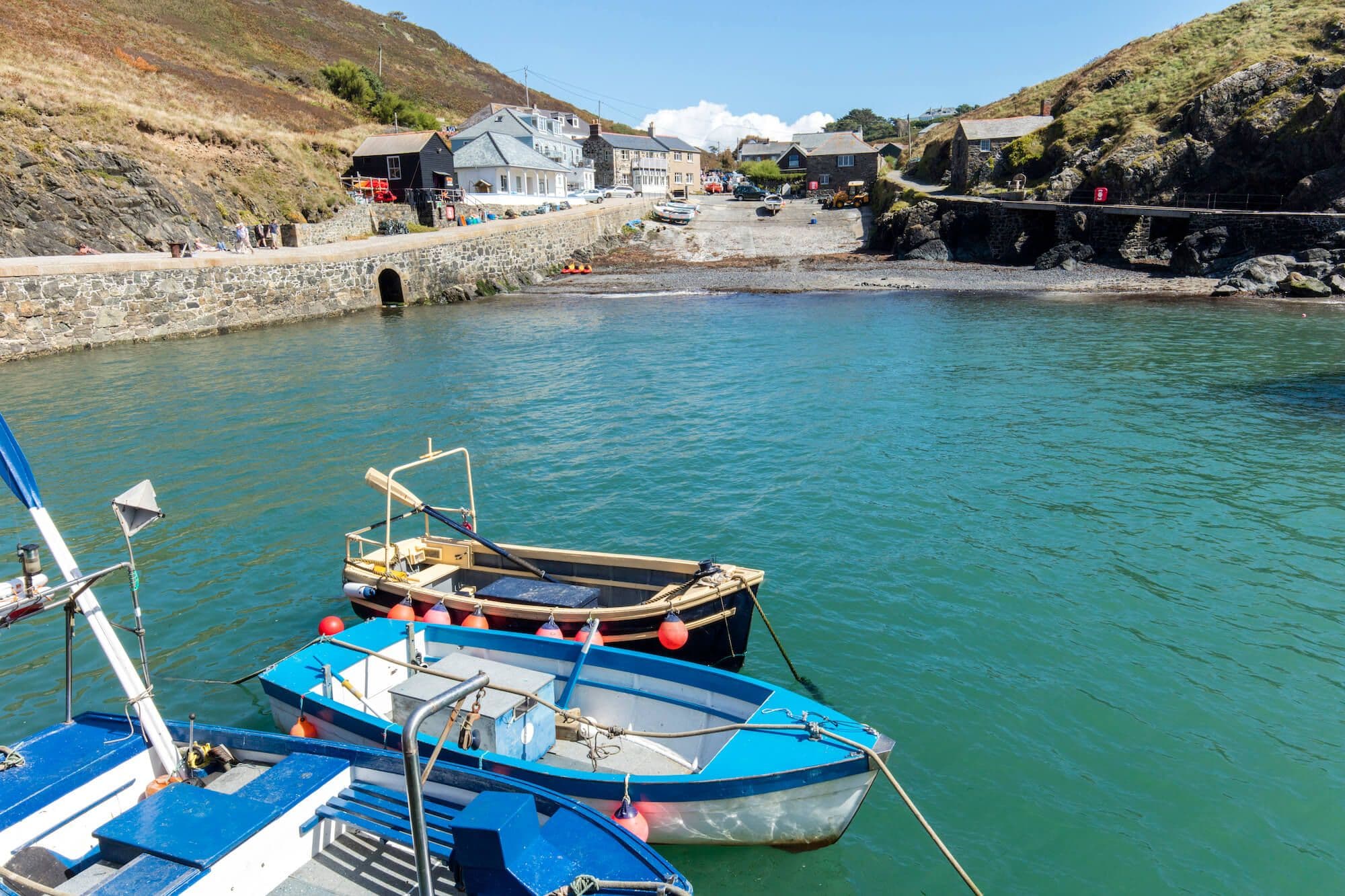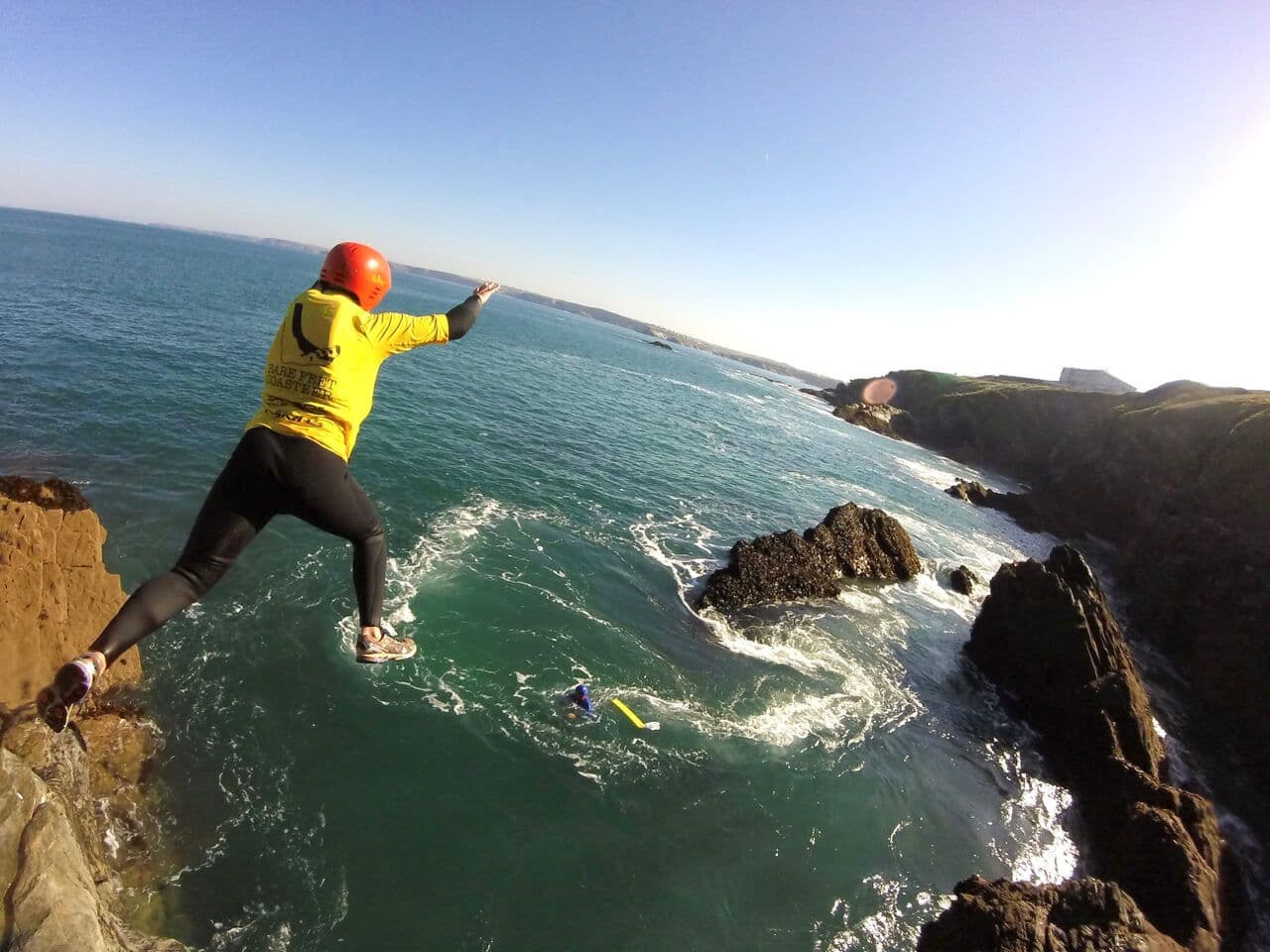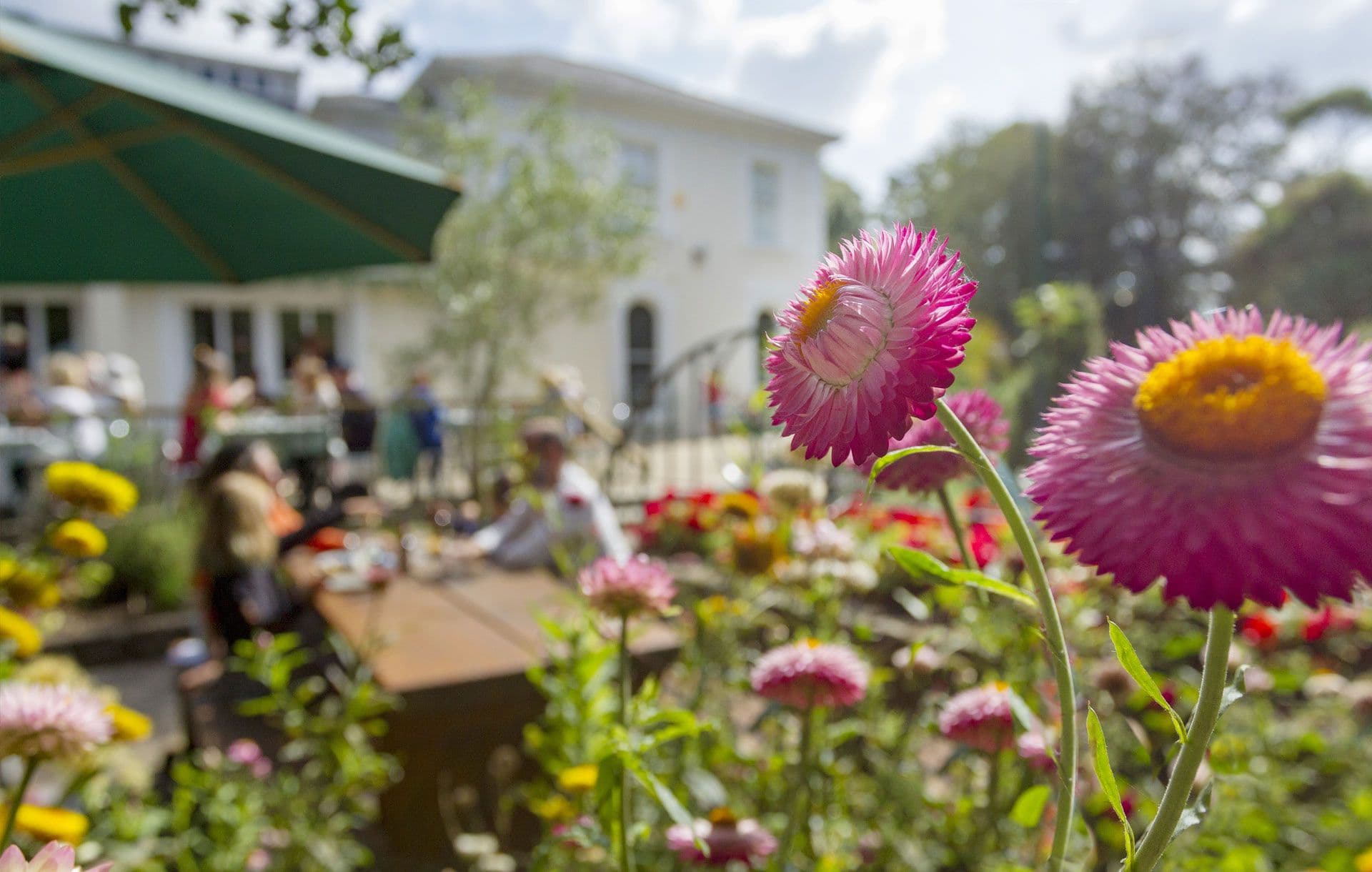15 Poldark film locations
Go behind the scenes and discover the glistening blue waters, lush countryside and craggy cliffs that have sashayed from the background to become the lead Poldark star. We think they’re even better in real-life than they are on screen!
Gunwalloe (National Trust) - Dollar Cove and Church Cove
Gunwalloe, an attractive sandy cove overlooked by the tiny church of St Winwaloe on the Lizard, relived its smugglings past when Aidan Turner and a hoard of other cast members and extras descended to film night-time shipwrecking scenes for series one. It’s also the setting for Dr Dwight‘s cottage which stands on the cliffs about two miles along the coast towards Loe Bar and Porthleven (view it from the little car park accessed via a lane opposite the Halzephon Inn).
Charlestown
Charlestown near St Austell, famed for its traditional appearance, has long caught the attention of location managers. As well as standing in for Poldark’s Truro, it also plays the role of Falmouth where Captain Andrew Blamey lives and sails from. His apparent Falmouth abode overlooks Charlestown’s inner harbour and it is from here that Verity Poldark elopes with him to the disapproval of her family. Charlestown beach and slipway also doubles up as St Mary's on the Isles of Scilly in the scenes that see Ross meet up with the exiled Mark Daniels in series two.
Botallack (National Trust)
A centrepiece of Cornwall’s mining history and part of the Cornish Mining World Heritage Site, the mines at Botallack in west Cornwall feature as Wheal Leisure (West Wheal Owles), Grambler (Wheal Crowns) and Wheal Grace. They also provide the backdrop to some coastal clifftop encounters.
Levant Mine and Beam Engine (National Trust)
North east of Botallack is the National Trust owned mine of Levant. Well preserved and restored, it houses the only existing working steam beam engine in Cornwall and its buildings serve as Tressiders Rolling Mill in the programme. Early in series two, the debate between Ross and Francis regarding claims for the engines’ capabilities by its inventor, the engineer Richard Trevithick, plays out in the engine room, although in reality both actors were “green screened” in through the window and were actually standing on a platform elsewhere!
Holywell Bay (National Trust)
This huge beach of golden sand backed by grass tufted dunes is a perfect example of the north coast’s wide open bays. With its iconic twin peaked Gull Rock just off shore, it has been used for many encounters between Ross, Demelza and sworn enemy George Warleggan, as well as for the challenging horse races between Dwight and Caroline.
Bodmin Moor
Scenes featuring the exterior of Ross Poldark’s cottage, Nampara, are shot on the wild and rugged Bodmin Moor along with many capturing the cast on horseback. It’s also the site of the miners’ cottages, such as the one that Ross gives to Jim Carter and his wife Jenny, and is home to Dr Dwight’s original cottage. In the very first episode Rosss meets Demelza at the meeting of paths just northwest of the village of Minions.
St Agnes Head (National Trust)
St Agnes Head, where the iconic engine house of Wheal Coates perches on the cliff edge, offers a natural location choice for Poldark. As well as doubling as Nampara Valley, it featured as the narrative and literal cliff-hanger to both series one and two, and has seen its fair share of horse-riding scenes.
Porthgwarra
Once a thriving fishing cove, the beautiful Porthgwarra sits at the heart of the St Aubyn Estates to the south of Land's End. It boasts a peaceful existence surrounded by wildflowers, birdlife and the occasional seal. The memorable scene in series one featuring Ross taking a swim in the crystal clear water while watched from the cliff tops by Demelza was filmed here, as well the pilchard fishing scene. Porthgwarra is also home to the tunnel where Ross kept his boat which was used by Mark Daniels to escape capture for the accidental killing of his wife, Keren.
Gwennap Head
Between Land's End and Porthgwarra stands Gwennap Head, a dramatic headland popular with rock climbers. With a lighthouse in the distance and crystal clear waters below, Gwennap Head offers truly breathtaking views and is a favourite spot for clifftop riding, chance encounters and long lingering looks in Poldark.
Porthcurno (National Trust)
One of Cornwall’s most stunning beaches, it’s easy to see why Poldark location managers picked the exotic oasis of Porthcurno for Nampara Cove. With gorgeous fine soft white sand, washed by a sea that turns turquoise in the sun, and high cliffs on both sides providing shelter, it is a true natural beauty. In series two (episode two), Demelza and Ross find themselves walking along Porthcurno Beach in a dream sequence on a spectacular sunny day.
Kynance Cove (National Trust)
With its pure white sand, turquoise waters and serpentine rock-towers, Kynance Cove makes the perfect setting for Poldark. It’s one of Cornwall’s most famous beaches, so is a natural in front of the camera and provides long panning aerial shots, including clifftop riding scenes and the opening sequence of series two. This is also where Ross is marched at the hands of his arresting officers, towards Truro jail, having just been apprehended at St Agnes Head. We recommend visiting this location out of season and it can get extremely busy with very limited parking.
Predannack Wollas, The Lizard (National Trust)
The wild qualities of this windswept headland and wild-flower strewn cliffs between Kynance and Mullion provided the location for many of Poldark’s charges on horseback.
Park Head and Porthcothan (National Trust)
The cliff tops at Park Head near Porthcothan on the dramatic north coast offer stunning views across to the towering sea stacks at Bedruthan Steps. They’re one of the locations used for scenes of Ross galloping on horseback, while the stunning beaches at Porthcothan star as part of Nampara.
Penberth Cove Penberth Cove, a small fishing village between Porthcurno and Mousehole, was used for Sawle, the village where Demelza's two brothers, Sam and Drake Carne live. Owned by the National Trust, there's still two or three small fishing boats that use the cove which still has a large capstan, once used to haul boats up the slope from the sea.
Turnaware Point Turnaware Point on the beautiful Roseland side of the River Fal is famous for its association with the D-Day landings. Fans may recognise it from series three when it acts as a French location for some covert landings.

Your weekly dose of Cornish cheer!
When you can’t be in your favourite place all the time, catch up on the latest stories, upcoming events, holiday ideas, and offers with a newsletter straight to your inbox. Terms and Conditions / GDPR compliance: by providing personally identifiable information Visit Cornwall will use it to provide you with ongoing information about their products and services. No one from Visit Cornwall will rent, sell or lease this personally identifiable information to other companies or individuals.
Stay connected
Find us on socials and stay connected with the Cornwall you love.
We use cookies to personalise content and ads and to analyse our traffic. You consent to our cookies if you continue to use our website. (Privacy Policy)








